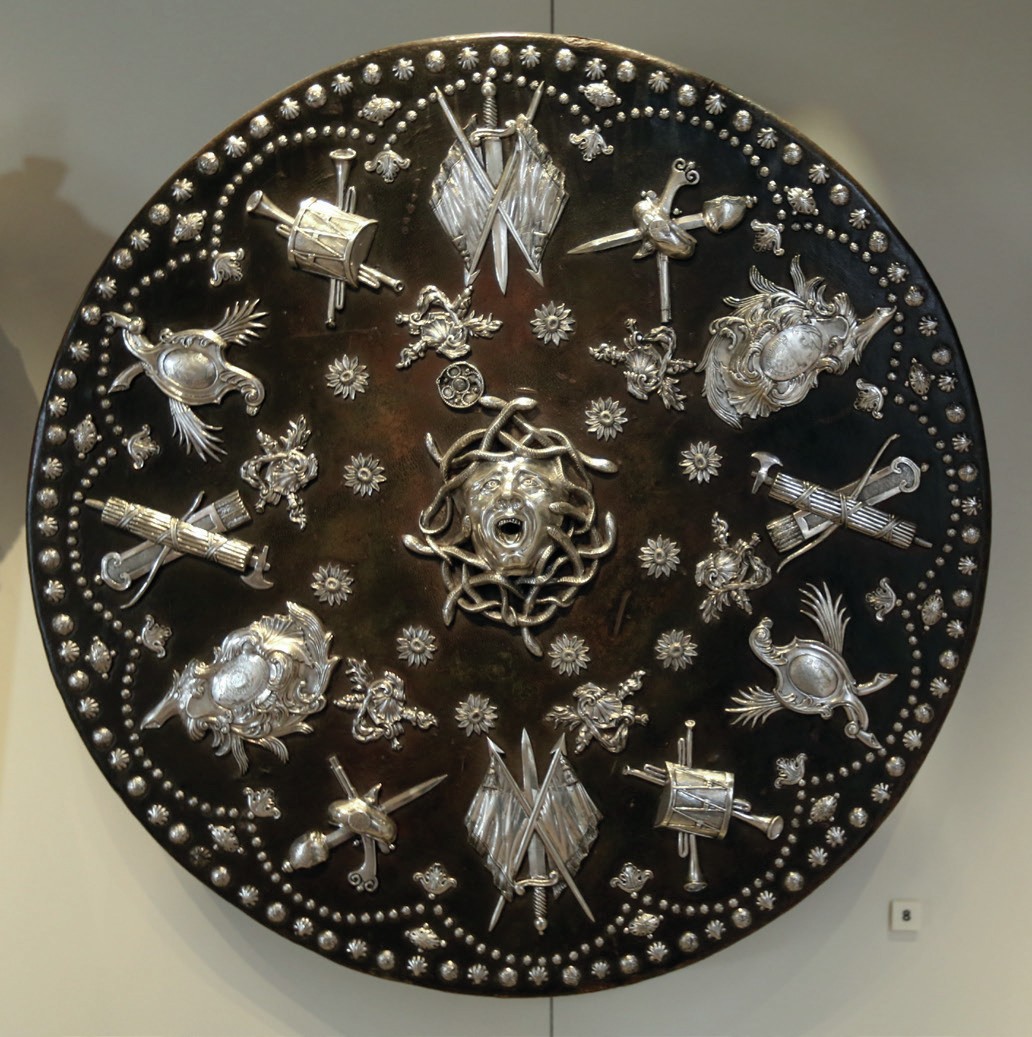
Targe with a screaming Gorgon (Medusa) head at its centre, long thought to have belonged to Charles Edward Stuart, c.1739
From 1719 onwards, the exiled Stuart court was based in Rome. For many British visitors on the grand tour, it became something of a tourist attraction, not unlike the Colosseum, the Forum and the other remains of the ancient world that they travelled to the Eternal City to admire. At a time when the culture and imperial success of ancient Rome was held in high regard, it was perhaps inevitable that the leaders and supporters of the Jacobite cause would regularly turn to the classical world when creating images and texts celebrating and promoting the Jacobite succession and the Stuarts’ claim to the thrones of the three kingdoms.
This article reveals that classical allusions are commonly found in Jacobite material and literary culture, often creating complex comparisons between the Stuarts and heroes and gods from ancient history and myth. It proposes that the Stuarts themselves largely shied away from classical comparisons, preferring imagery which linked them with their religious affiliations, royal status and British connections. At the same time, however, their Jacobite followers appeared more comfortable with classical allusions, featuring them in propagandist and in situ art, alongside circulating medals, literature and song.These references to ancient Rome included quotations from Latin poetry and images of historical and legendary heroes, mythical gods and monsters. Using allegory and metaphor allowed adherents in Scotland to create a classically influenced visual and literary cipher, codifying their treasonous political beliefs and hiding them in plain sight.
Leggete l'articolo completo e molti altri in questo numero di
History Scotland
Opzioni di acquisto di seguito
Se il problema è vostro,
Accesso per leggere subito l'articolo completo.
Singolo numero digitale
Spring 24
Abbonamento digitale annuale
€30,99
fatturati annualmente
Abbonamento digitale di 6 mesi
€16,99
fatturati due volte l'anno